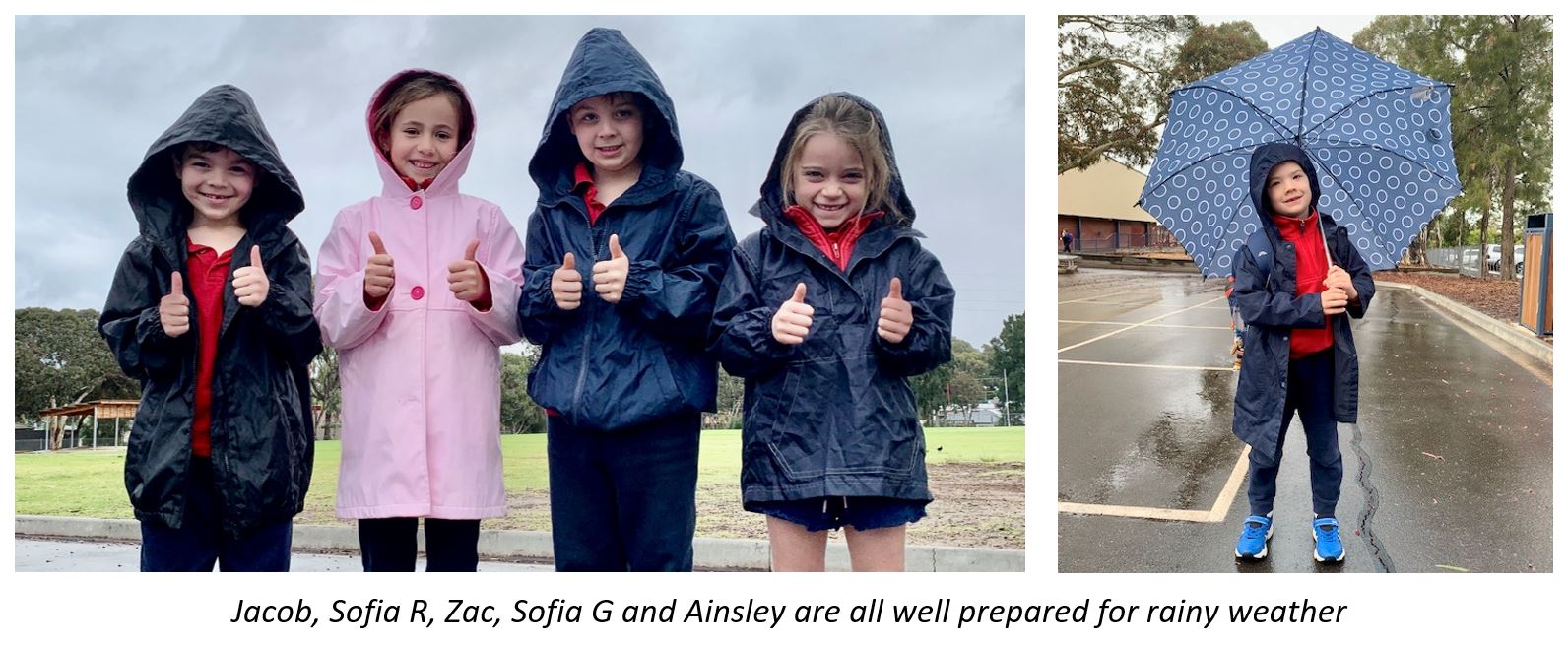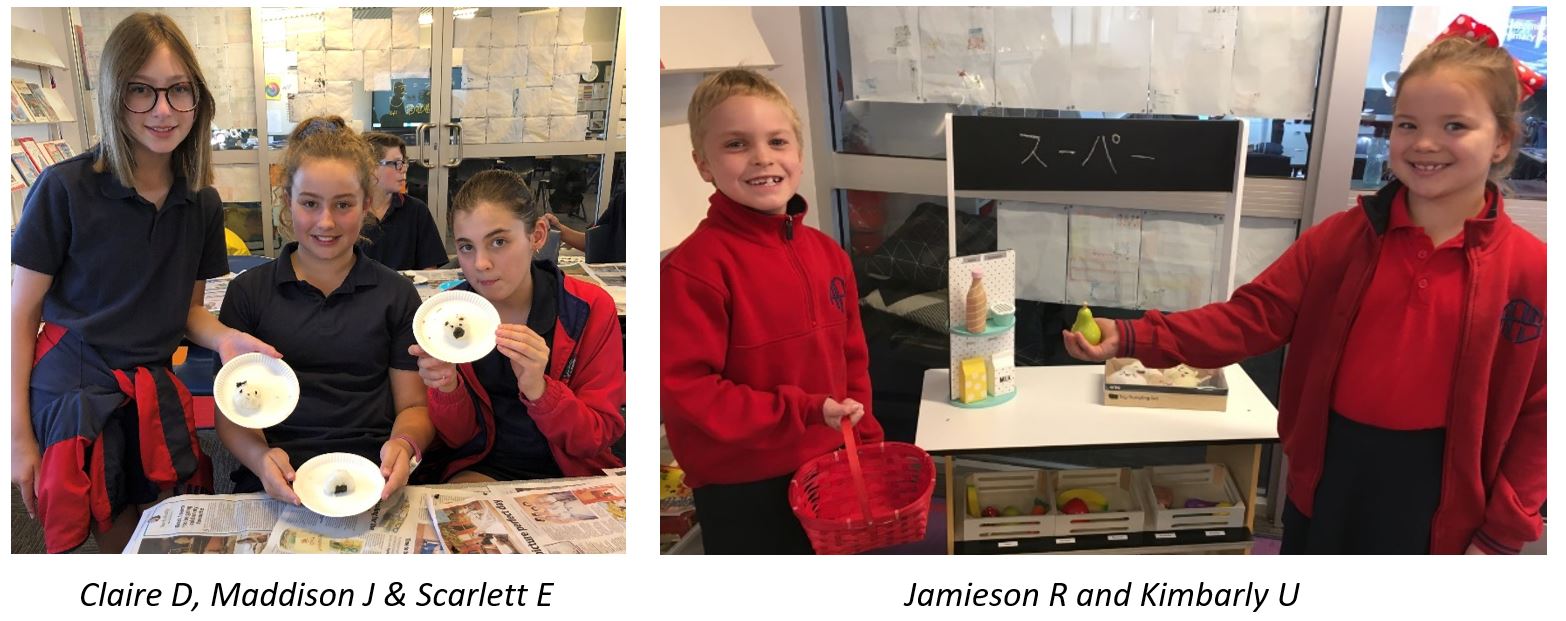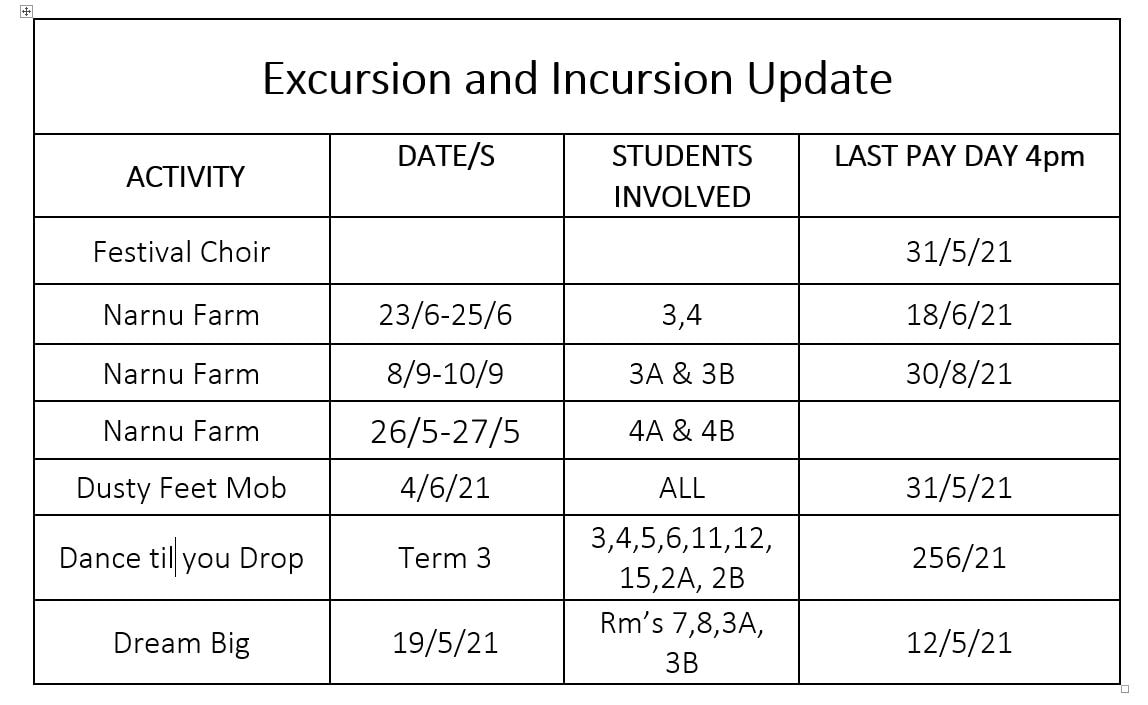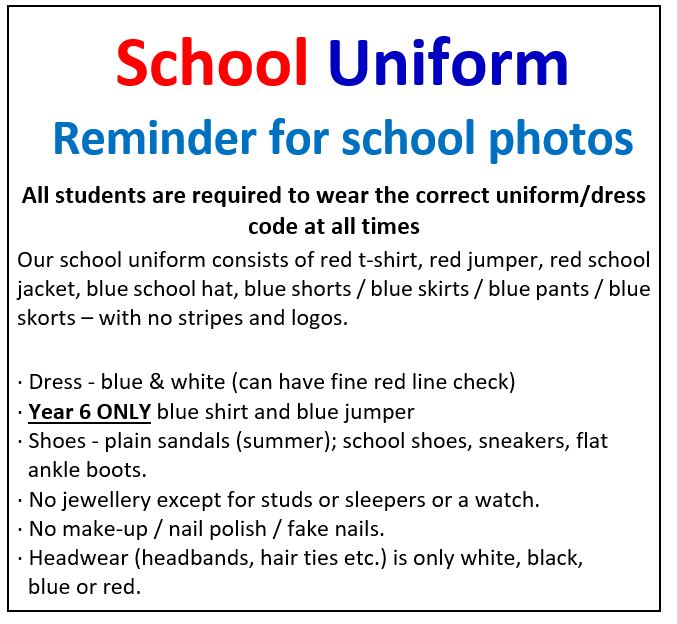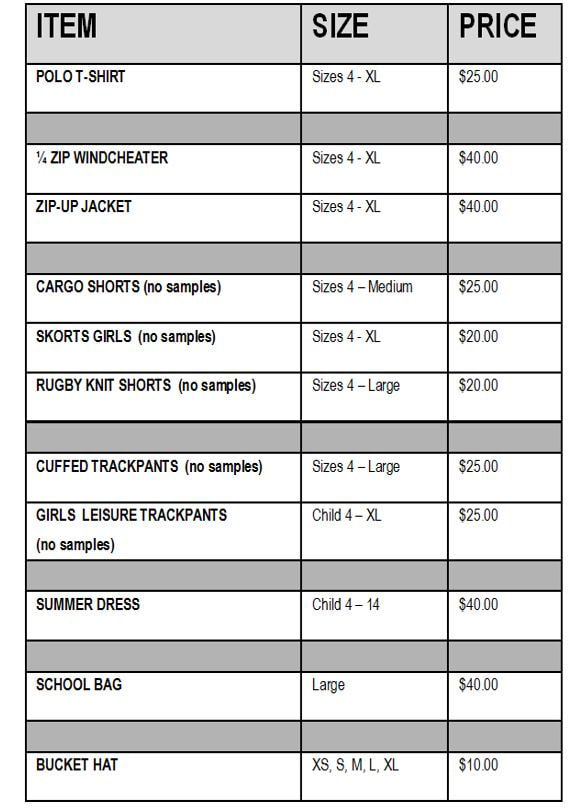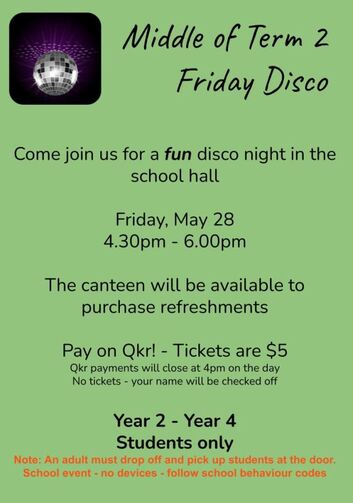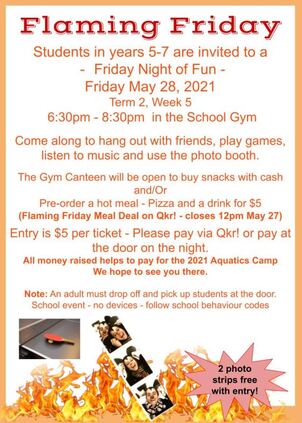In this issue
Diary Dates
May 18th – Volunteers Morning Tea 19th – Dreambig Excursion Rm’s 7,8,3A, 3B 20th – Parliament House Excursion Rm’s 1B, 9, 10 21st – Assembly 10am 24th – Finance Meeting 3.15pm 26th – Sports Meeting 26th – 27th Room 4A/4B Camp 27th – Grounds Meeting 3.15pm, Reconciliation Week 28th – Soccer Carnival, JP Disco – Lunchtime, Primary 4.30- 6pm, Upper Primary 6.30 - 8.30pm Road Crossing
Monitors Wed 26th May – Tue 1st June Jude H, Tate W, Keira C Wed 2nd June – Tue 8th June Gargee V, Isabelle C, Maddison J Wed 9th June – Tue 15th June Gemma R, Avara E, Lara B Please arrive by 8.25am |
Rain Jackets - Keeping Kids Dry & HappyAll students, but especially the students in the new transportable classrooms on the oval, move around the school grounds during the day as they attend specialist lessons and visit the library, gym or toilets.
Now that the wet, cold weather is now upon us we recommend sending your child to school with a waterproof jacket / raincoat or umbrella. These do not need to be in school colours. Wellie boots are also a great idea, however they’ll still need appropriate sports shoes for PE lessons. A Spare change of clothes in their bag, would also be a good idea, as we a few children have already slipped over and become wet and muddy. At recess and lunch times students return to class if it begins to rain, but they can still get very wet if they have a long way to travel and are caught in a down pour. In the next few days a gravel path is being laid along the edge of the oval to ensure students have a safe, dryer path to follow across our boggy oval. Learning Japanese - Developing Cultural AwarenessLearning Japanese at Ardtornish entails more than just learning the language. In Japanese lessons students develop intercultural understanding through the experiences we give them. Students in years 1 – 4 started the term by celebrating Kodomo no Hi (Children’s Day), making carp kites and origami. They are now learning how to shop in Japanese, learning phrases such as ikura desu ka? (How much is it?) takai desu! (too expensive!) and yasui desu! (wow, that’s cheap!) as well as supermarket vocabulary such as ringo (apples), miruku (milk) and monetary amounts such as hyaku-en (100 yen = $1). Next term students will be learning sports vocabulary and how to say what sports they like as we learn about the Olympics in Tokyo.
Meanwhile the Year 6/7 students have undertaken a unit on food. Students were introduced to some traditional Japanese dishes, important associated vocabulary and phrases. Students learnt how to use chopsticks and participated in making 'onigiri', a traditional snack made of rice and flavourings. Students enjoyed decorating the onigiri and participating in a bit of friendly competition! All these activities broadened their understanding of the Japanese culture. |
Canteen RosterTuesday 18th Michele S
Wednesday 19th Mary-Anne R Thursday 20th Evelyn C, Chris G-G Friday 21st Emma J, Natasha H, Wei-Wei R Tuesday 25th Michele S Wednesday 26th Mary-Anne R Thursday 27th Deneice P, Tui M Friday 28th Rhonda P, Stacey C, Emma J Bread Bags & Tags
Help our school by bringing in Wonder bread bags and tags and we will earn reward points to redeem for sports equipment. The festival of Music is also collecting bread tags to be made into wheelchairs. Please bring them into room 9/10. |
School photo day is, Thursday 3rd June for class and individual photos, in the Gym.
Group Photos will be on Friday 4th June in the Hall. Please note: Family photos will be taken from 8.30 - 9.00am on photo day, if you would like to have a family photo taken you will need to be at school for this time and go straight to the gym. Family photo envelopes are available from the front office. (Cash only) Sibling photographs only apply to children enrolled at the school. Please bring your photo envelope with the money enclosed on the day of the photos. Please use correct money, there is no change given and the front office does not hold change. Cash, cheque and money orders only to be put in the envelope. You can make credit card payments online. Group photos include….Dance, Aerobics, Hip Hop, Cheer, Choir, Pedal Prix and Football. Group photo orders are taken a couple weeks after photo day. Late fees/additional charges will be applied for purchases after photo day Students who are in a group, who are having photos on the day, please remember to bring with you, your instruments and dance / aerobics costumes and uniforms. |
Getting enough sleep is essential to our physical and mental wellbeing. As parents, we can teach our children about the importance of sleep and the strategies they can use to help them get more of it.
The Benefits of Getting Enough Sleep
Did you know that during sleep the brain sorts and processes the day’s information and files it away for later use and importantly it creates long term memories. Who would have thought that sleeping can help us remember our times tables! 😊
During sleep, hormones are released into our body. Melatonin levels are increased at night-time which helps us feel sleepy and controls our sleep patterns, whilst growth hormone helps our body to grow and repair itself.
When we have less sleep the stress hormone cortisol is reduced which can over the long-term cause ongoing complications such as high blood pressure, type 2 diabetes, and osteoporosis. Cortisol also increases our appetite and signals the body to shift metabolism to store fat. It interferes with daily cycles of other hormones, disrupting sleep patterns and causing fatigue, memory, and brain fog.
During sleep, our immune system releases a type of small protein called cytokines. These help our body fight inflammation, infection, and trauma. Without enough sleep our immune system might not be able to function at its best.
Sleep Strategies
Have a regular sleep pattern
Try to go to bed at around the same time every evening and get up at around the same time every morning.
Spend the right amount of time sleeping
Recommended sleep for Pre-schoolers 10-13 hrs, School age children 9-11 hrs, Teenagers 8-10 hrs and Adults 7-8.5 hrs.
Exercise during the day
The more exercise we have in the day, the quicker we fall asleep at night.
Bed is for sleeping
Did you know that smartphones, tablets, computers, and the television can interfere with sleep. Studies show that up to 50 % of young people are not getting enough sleep. The emitting blue light suppresses melatonin which makes it more difficult to get to sleep. Turn off devices 1 hour before bedtime and remove device from bedroom. It is important that parents put rules in place because we know young people have good intentions but can find it hard to monitor themselves.
Make sure your bedroom is comfortable
You should have a quiet, dark room with comfortable bedding. Use a night light or hall light if needed.
Wind down and relax before going to bed
As you know, the activities and worries of the day can come to mind as soon as our heads hit the pillow. It is the same for kids, try and provide a time well before bedtime for young people to talk about their day.
Have a warm bath or drink warm milk.
Use a relaxation technique to wind down and practice it regularly,
Techniques to relax
Close your eyes, relax your muscles, and stay as still as you can. Test yourself to stay super still for a minute or two and then wriggle around if you need to and then try to stay super still again.
Use calm thoughts or pleasant images of getting to sleep.
Use a proven breathing technique, like this one.
First, make a whooshing sound, exhaling completely through your mouth.
Next, close your lips, inhaling silently through your nose as you count to four in your head.
Then, for seven seconds, hold your breath.
Make another whooshing exhale from your mouth for eight seconds.
Do this four times and over time work up to eight times.
Sleeping is a necessary and wonderful part of life.
The more sleep our children have, the better prepared they are for a fun day of learning and social interaction at school.
If I can be of any support, please contact the school on 8264 8099 or email me at [email protected]
For further information on sleep go to
https://developingminds.net.au/blog/2018/3/4/12-facts-to-tell-your-childteen-about-sleep?rq=sleep
https://www.betterhealth.vic.gov.au/health/HealthyLiving/teenagers-and-sleep#preventing-sleep-deprivation-in-teenagers-tips-for-parents
https://raisingchildren.net.au/pre-teens/healthy-lifestyle/sleep/school-age-sleep
The Benefits of Getting Enough Sleep
Did you know that during sleep the brain sorts and processes the day’s information and files it away for later use and importantly it creates long term memories. Who would have thought that sleeping can help us remember our times tables! 😊
During sleep, hormones are released into our body. Melatonin levels are increased at night-time which helps us feel sleepy and controls our sleep patterns, whilst growth hormone helps our body to grow and repair itself.
When we have less sleep the stress hormone cortisol is reduced which can over the long-term cause ongoing complications such as high blood pressure, type 2 diabetes, and osteoporosis. Cortisol also increases our appetite and signals the body to shift metabolism to store fat. It interferes with daily cycles of other hormones, disrupting sleep patterns and causing fatigue, memory, and brain fog.
During sleep, our immune system releases a type of small protein called cytokines. These help our body fight inflammation, infection, and trauma. Without enough sleep our immune system might not be able to function at its best.
Sleep Strategies
Have a regular sleep pattern
Try to go to bed at around the same time every evening and get up at around the same time every morning.
Spend the right amount of time sleeping
Recommended sleep for Pre-schoolers 10-13 hrs, School age children 9-11 hrs, Teenagers 8-10 hrs and Adults 7-8.5 hrs.
Exercise during the day
The more exercise we have in the day, the quicker we fall asleep at night.
Bed is for sleeping
Did you know that smartphones, tablets, computers, and the television can interfere with sleep. Studies show that up to 50 % of young people are not getting enough sleep. The emitting blue light suppresses melatonin which makes it more difficult to get to sleep. Turn off devices 1 hour before bedtime and remove device from bedroom. It is important that parents put rules in place because we know young people have good intentions but can find it hard to monitor themselves.
Make sure your bedroom is comfortable
You should have a quiet, dark room with comfortable bedding. Use a night light or hall light if needed.
Wind down and relax before going to bed
As you know, the activities and worries of the day can come to mind as soon as our heads hit the pillow. It is the same for kids, try and provide a time well before bedtime for young people to talk about their day.
Have a warm bath or drink warm milk.
Use a relaxation technique to wind down and practice it regularly,
Techniques to relax
Close your eyes, relax your muscles, and stay as still as you can. Test yourself to stay super still for a minute or two and then wriggle around if you need to and then try to stay super still again.
Use calm thoughts or pleasant images of getting to sleep.
Use a proven breathing technique, like this one.
First, make a whooshing sound, exhaling completely through your mouth.
Next, close your lips, inhaling silently through your nose as you count to four in your head.
Then, for seven seconds, hold your breath.
Make another whooshing exhale from your mouth for eight seconds.
Do this four times and over time work up to eight times.
Sleeping is a necessary and wonderful part of life.
The more sleep our children have, the better prepared they are for a fun day of learning and social interaction at school.
If I can be of any support, please contact the school on 8264 8099 or email me at [email protected]
For further information on sleep go to
https://developingminds.net.au/blog/2018/3/4/12-facts-to-tell-your-childteen-about-sleep?rq=sleep
https://www.betterhealth.vic.gov.au/health/HealthyLiving/teenagers-and-sleep#preventing-sleep-deprivation-in-teenagers-tips-for-parents
https://raisingchildren.net.au/pre-teens/healthy-lifestyle/sleep/school-age-sleep


